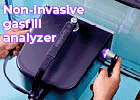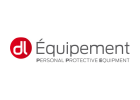Lighter bottles have compelling benefits: they require less raw material and energy, which means lower costs throughout the value chain and a lower carbon footprint.
It takes time and effort to develop the skills, people and technology needed to excel in the field, but over the last two decades lightweighting has become one of Consol’s core competencies, a key competitive advantage and a point of considerable pride in the company.
Consol’s lightweighting journey began in the late 1990s when South Africa’s markets opened to the rest of the world and industries were pressured to innovate quickly to catch up. Beer brands were some of the first to see the potential of lightweighting to reduce costs and differentiate their products, and collaborations between Consol and SAB, and later Consol and Heineken, introduced best-in-class designs to their markets.
A breakthrough in Consol’s lightweighting journey occurred when a new bottle-forming process – the narrow-neck press-blow (NNPB) method – was trialled at Consol’s Clayville plant in the late 1990s.
NNPB has considerable advantages when your goal is to use less material while retaining exceptional control over the final product. But this control comes at a price, namely the requirement for astonishingly tight tolerances in the process. To get the desired results, for example, the level of molten glass in the vast furnaces that feed the forming machines can’t deviate by more than half a millimetre. The temperature of the molten glass supplied to the forming machine, typically around 1 200°C, can’t vary by more than a degree.
Seventy-two different moulds running across the glass-forming machine have to be meticulously aligned and maintained to precisely match so that each bottle manufactured meets the very tight specification tolerances. And because glassmaking is a non-stop process, these tolerances need to be achieved 24/7, 365 days a year, for the lifetime of the machinery.
This requires exceptional technological and human skills that are key competencies for Consol.
As a result of the fearful learning curve involved in this new technology, the introduction of NNPB was, in the words of Paul Curnow, Consol’s Deputy CEO, “fairly traumatic in the early days”. Those tasked with the project made immense personal sacrifices to see it through to fruition. By the mid-2000s, however, it had become routine for Consol’s smaller volume (340 ml range) beer bottles to be made in NNPB, and by the early 2010s the process had been rolled out to larger volumetric sizes (650 ml and 750 ml ranges) and then to wine and spirit bottles. Today Consol is one of the best exponents of the NNPB art in our markets.
Alongside technical skill and rigorous processes, collaboration is key to a successful lightweighting project. It is a deeply interactive process that might begin with Consol’s analysis of market conditions and trends suggesting a new design to a customer, or with a customer coming to Consol with a request to determine what’s possible within a certain shape. Designs are drawn up, debated, and sent for stress analyses. Eventually a small trial run of physical samples will be produced, followed by a run of several thousand samples which can be tested for packing and transport.
The testing at every stage is exceptionally rigorous. It has to be: there’s a lot at stake when designing a lighter bottle. Absolute control over bottle strength and quality must be assured. Most bottles carry products with carbonation, and their safety needs to be guaranteed until they are eventually recycled.
What is it about Consol that allowed it to overcome the challenges lightweighting posed to become one of the world’s few manufacturers at the forefront of the art? For Curnow, it was an unremitting commitment to excellence. “On the one hand, there was the sense that if we didn’t learn how to do it first someone else would and we’d lose our edge and our jobs. If our jobs are difficult we have a much better chance of keeping them! ” he explains. “But there’s also a certain mindset prevalent in the organisation that is excited by the challenge, by the continuous improvement of processes, and by becoming globally competitive at a very difficult task. We want to be better than our competitors, and we’re willing to do what’s necessary to achieve that.”

























